OPENING PROGRAMME — ASIA PREMIERE
“Extraordinary ballet with stark score from Jamie xx is fecund with human creativity… sometimes five stars are not enough”
— The Independent , UK ★★★★★
"A truly collaborative process lies behind the extraordinary artistic triumph of this new contemporary ballet"
— The Stage, UK
A flicker originates galaxies of shades and sounds
Fusing literature, dance, space and bodily form into New Vision
A book beyond reading. Choreography beyond imagination. In creating the intriguing Tree of Codes, best-selling American author Jonathan Safran Foer literally carved out words from the 1930s novel, Street of Crocodiles, to create a “sculptured book” with a fresh story to tell. Now contemporary British choreographer Wayne McGregor has added an extraordinary twist to the tale with a swirling, immersive, free-form balletic reinvention that tests the physical limits of the performers, with dancers from Company Wayne McGregor and guest artists.
To convey the weightlessness of words on a page, installation artist Olafur Eliasson (The weather project for London’s Tate Museum, The New York City Waterfalls) constructs a kaleidoscopic landscape out of multiple mirror images, while Mercury Prize winner Jamie xx employs a tailor-made surround-sound system to move beyond the world of records into uncharted sonic realms. A vitality-filled encounter with three exceptional artistic talents who together take contemporary collaborations to enthralling new heights.
Director/Choreographer:
Music:
Visual Concept:
Performed by:
Related info
Meet-the-artist session after the 19 October performance
Produced by :
Manchester International Festival, Paris Opera Ballet and Studio Wayne McGregor
Commissioned by :
Manchester International Festival, Park Avenue Armory, FAENA ART, Paris Opera Ballet, Sadler’s Wells and European Capital of Culture Aarhus 2017
Photo:
Joel Chester Fildes, Ravi Deepres
Fringe Activities
Of Dance and Codes
Three creative geniuses, inspired by a “sculptured book”, co-produced Tree of Codes where physical movement, music and installation interact while still remaining detached from each other. Here, two arts educators discuss topics ranging from randomness in creation to our expectations of dance, exploring the relationship between algorithms and art.Speakers: Lau Tin-ming (veteran arts educator) & Justin Wong (Cartoonist & Assistant Professor, Academy of Visual Arts, Hong Kong Baptist University)
Date: 15.9(Sat)
Time: 3:30-5pm
Venue: Hong Kong Cultural Centre Administration Building Podium Workshop
In Cantonese
Free admission; first-come-first-served
Dance Workshop
The workshop includes a technique-based warm-up followed by some teaching of repertoire and creative tasks that reflect the way Wayne McGregor works with his dancers.
Instructors: Travis Clausen-Knight & Louis McMiller (Dancers of Company Wayne McGregor)
Date: 20.10(Sat)
Time: 2-3:30pm
Venue: Hong Kong Cultural Centre Grand Theatre Backstage Level 6 GR1
Fee: $160
Quota: 30
In English
Suitable for those aged 16 or above with some dance experience. Participants are advised to wear comfortable clothes and shoes.
Extension Reading
Guided by the Text to Remember Our Bodies— Two European Dance Works Swan Lake / Loch na hEala and Tree of Codes
Text: Zou Xin-ning
(Freelance writer from Taiwan)
Contemporary dance is inextricably linked with the word “body”, which confronts both the choreographer and audience with the following question: What do you think of the body which is both creative tool and source material? If you try to use language to analyse this “body”, our close companion from birth, you can easily go off on a tangent or into speculative ambiguity. There are many reasons why the body is difficult to explain. Chinese culture does not regard body perception as an important part of education, ultimately teaching generations to become civilised people with a mind/body split.
Therefore, one is almost grateful for the dance works that come with text. It is as if one was about to climb a desolate mountain of which only the name is known, and is suddenly gifted with a GPS―even if it is a mere red line from which it is impossible to trace details of landscape and ecology; still, it is a map with which one can go deep into the mountain forests.
The two European productions invited by the New Vision Arts Festival both include text, which makes them more accessible than dance works of purely physical exploration. Teac Damsa from Ireland presents Swan Lake / Loch na hEala, which brings two famous swan stories, the classic ballet Swan Lake and the Irish legend The Children of Lir, into conversation. The swans in both stories are victims: the former a girl cursed by an evil magician to be a swan by day and revert to human form by night, where she dances and laments her fate by the lakeside; the latter the four children of King Lir, transformed into swans by their evil step-mother, and who have found protection by the monks over the years. Whereas Wayne McGregor, darling of the English dance scene, together with other star artists, creates Tree of Codes, based on the American writer Jonathan Safran Foer’s book of the same name. The wonderful thing is that this book also has an “ur-text”―Polish writer Bruno Schulz’s short story collection Street of Crocodiles. Foer cut out words on each page―even the title Tree of Codes is the result of this cutting out from the Street of Crocodiles. The publication of such a book became the talk of the town. Rather than calling it a literary work, perhaps it is more appropriate to call it a work of art.
Since both dance works fall under the rubric of “contemporary dance”, how do these two choreographers learn from their predecessors and create a contemporary new look through dance and other theatrical elements? In fact, the two works adopt opposing strategies of adaptation and reinterpretation. However, they are united in musical taste, which inclines to the contemporary: The music of Tree of Codes is compiled by Jamie xx, a member of the popular independent band The xx, resulting in a light, mesmerising, minimalist electronic style which many foreign dance critics have described as “nightclub- like”. In the face of Tchaikovsky’s majestic original music for Swan Lake, choreographer Michael Keegan-Dolan broke with tradition and engaged Slow Moving Clouds, a musical group with strong Irish and Nordic folk elements, to perform live for Swan Lake / Loch na hEala. This Irish atmosphere gives the swan stories a different inflection from Tchaikovsky’s romantic beauty. Gloom occasionally breaks through the light, repetitive folk melodies, which collide with the inevitable tragedy, finally intertwining into a bittersweet finale.
Though the trend towards electronic music and Nordic traditional music with experimental influences forms the contemporary background for the youthful energy fermenting in these two works, the interpretative angles of the two core creatives, McGregor and Keegan-Dolan, represent two ends of the choreographic spectrum and reflect each other.
In an interview, Keegan-Dolan admitted that “classical ballet is not my cup of tea”. Dissatisfied with the power structures of traditional ballet, and also deeply sympathetic to the tortured dancers (he mentioned that when he visited the Moscow City Ballet classes, the exhausted countenance of dancers and piano teachers and students brought tears to his eyes), it was impossible for him to embrace the world of Swan Lake as created by the “father of classical ballet” Marius Petipa, which “enshrined hierarchy and order, refinement and elegance” (Note 1). Keegan-Dolan, who believes that everyone should occasionally enter the realm of depression and explore the dark side of the soul, rips apart the beautiful old wallpaper of Swan Lake, and constructs a distinctly non-aristocratic, poverty- stricken Irish realm through rough piles of plastic sheets, scaffolding, and feathers from torn pillows. Instead of the heroic Prince Siegfried, we have 36-year-old Jimmy who suffers from serious depression. He goes to the lake alone with a gun, not to hunt, but to commit suicide. He meets Finola and her three sisters who were turned into swans, and who come to the lake to dance and temporarily forget their suffering and their nemesis―the priest who was rebuffed by Finola, raped her, and then forced her to forgive.
However, how can a society where the weak devour the weak contain a fairy tale? The priest is guilty, but he is a victim of the system of religious education. The policeman persecuting Jimmy is also wicked, but you will not have forgotten that the middle-aged man who plays both the policeman and the priest, was seen at the beginning of the piece, chained and naked, a weak old goat about to be slaughtered. No one is thoroughly evil, and everything is the result of systemic damage. Keegan- Dolan, who is deeply conscious of Irish national issues and identity, has given a contemporary frame to the swan legend. As for how we should continue to regard sin? The responsibility is left to the audience who will ultimately leave the theatre and return to reality.
The world of Tree of Codes is much brighter. Even though the Street of Crocodiles is always shadowed by the tragedy of Schulz―unknown during his lifetime, shot dead by the Nazis in the street, Foer’s cutting and pasting of Schulz’s words for his Tree of Codes reduces the weight of grief and re-endows the book with materiality―or, a more romantic way of putting it: It returns the body to the book. Presumably, the concept of “the page as body” attracted McGregor, which allowed this darling of contemporary ballet, described as someone who “can easily collaborate with the international community”, to join forces with Jamie xx and sculptor and large-scale installation artist Olafur Eliasson, to produce the stage version of Tree of Codes.
Although there is no tree on the stage, there is a sense of “the body as Bodhi tree”. At first only point-like lights, attached to the costumes of unseen dancers, can be seen in the darkness, floating in the electronic sound of Jamie xx, like twinkling stars, or perhaps more like cursors on a digital screen. Later, a few refractive mirrors appear. The images inside the mirrors, like ecological kaleidoscopes, are actually flowers formed by the body shapes of the dancers. Then, a dozen dancers appear and dance frenetically. Although each dancer dances in a different way, they are united by McGregor’s signature style of short rapid bursts, dynamic and disruptive of inertia. Due to the large spherical mirrors in the background, the audience seems to see dozens of dancers performing cascading dance movements, just like the visual experience of reading the Tree of Codes, where seemingly random chiselling allows the words on the pages to overlap with the gaps, pressing in on our vision. We cannot help but ask: Are these reflections and images there to remind us that the dancers’ bodies come between us and the illusion? Or are the reflections like the gaps in the text, subtracting meaning, and erasing the reality of the flesh?
“This is a book that remembers it has a body,” Foer declared (Note 2). The question comes back again to us: After watching a dance work, will we remember that we too have bodies?
(Translated by Amy Ng)
Note 1:
Homans, Jennifer. 2013. Apollo’s Angels: A History of Ballet, translated by Sung Wei-hang, p. 329. New Taipei: Yeren Publishing House.
Note 2:
https://www.vanityfair.com/culture/2010/11/jonathan-safran-foer-talks-tree-of-codes-and-paper-art
Text: Zou Xin-ning
(Freelance writer from Taiwan)
Contemporary dance is inextricably linked with the word “body”, which confronts both the choreographer and audience with the following question: What do you think of the body which is both creative tool and source material? If you try to use language to analyse this “body”, our close companion from birth, you can easily go off on a tangent or into speculative ambiguity. There are many reasons why the body is difficult to explain. Chinese culture does not regard body perception as an important part of education, ultimately teaching generations to become civilised people with a mind/body split.
Therefore, one is almost grateful for the dance works that come with text. It is as if one was about to climb a desolate mountain of which only the name is known, and is suddenly gifted with a GPS―even if it is a mere red line from which it is impossible to trace details of landscape and ecology; still, it is a map with which one can go deep into the mountain forests.
The two European productions invited by the New Vision Arts Festival both include text, which makes them more accessible than dance works of purely physical exploration. Teac Damsa from Ireland presents Swan Lake / Loch na hEala, which brings two famous swan stories, the classic ballet Swan Lake and the Irish legend The Children of Lir, into conversation. The swans in both stories are victims: the former a girl cursed by an evil magician to be a swan by day and revert to human form by night, where she dances and laments her fate by the lakeside; the latter the four children of King Lir, transformed into swans by their evil step-mother, and who have found protection by the monks over the years. Whereas Wayne McGregor, darling of the English dance scene, together with other star artists, creates Tree of Codes, based on the American writer Jonathan Safran Foer’s book of the same name. The wonderful thing is that this book also has an “ur-text”―Polish writer Bruno Schulz’s short story collection Street of Crocodiles. Foer cut out words on each page―even the title Tree of Codes is the result of this cutting out from the Street of Crocodiles. The publication of such a book became the talk of the town. Rather than calling it a literary work, perhaps it is more appropriate to call it a work of art.
Since both dance works fall under the rubric of “contemporary dance”, how do these two choreographers learn from their predecessors and create a contemporary new look through dance and other theatrical elements? In fact, the two works adopt opposing strategies of adaptation and reinterpretation. However, they are united in musical taste, which inclines to the contemporary: The music of Tree of Codes is compiled by Jamie xx, a member of the popular independent band The xx, resulting in a light, mesmerising, minimalist electronic style which many foreign dance critics have described as “nightclub- like”. In the face of Tchaikovsky’s majestic original music for Swan Lake, choreographer Michael Keegan-Dolan broke with tradition and engaged Slow Moving Clouds, a musical group with strong Irish and Nordic folk elements, to perform live for Swan Lake / Loch na hEala. This Irish atmosphere gives the swan stories a different inflection from Tchaikovsky’s romantic beauty. Gloom occasionally breaks through the light, repetitive folk melodies, which collide with the inevitable tragedy, finally intertwining into a bittersweet finale.
Though the trend towards electronic music and Nordic traditional music with experimental influences forms the contemporary background for the youthful energy fermenting in these two works, the interpretative angles of the two core creatives, McGregor and Keegan-Dolan, represent two ends of the choreographic spectrum and reflect each other.
In an interview, Keegan-Dolan admitted that “classical ballet is not my cup of tea”. Dissatisfied with the power structures of traditional ballet, and also deeply sympathetic to the tortured dancers (he mentioned that when he visited the Moscow City Ballet classes, the exhausted countenance of dancers and piano teachers and students brought tears to his eyes), it was impossible for him to embrace the world of Swan Lake as created by the “father of classical ballet” Marius Petipa, which “enshrined hierarchy and order, refinement and elegance” (Note 1). Keegan-Dolan, who believes that everyone should occasionally enter the realm of depression and explore the dark side of the soul, rips apart the beautiful old wallpaper of Swan Lake, and constructs a distinctly non-aristocratic, poverty- stricken Irish realm through rough piles of plastic sheets, scaffolding, and feathers from torn pillows. Instead of the heroic Prince Siegfried, we have 36-year-old Jimmy who suffers from serious depression. He goes to the lake alone with a gun, not to hunt, but to commit suicide. He meets Finola and her three sisters who were turned into swans, and who come to the lake to dance and temporarily forget their suffering and their nemesis―the priest who was rebuffed by Finola, raped her, and then forced her to forgive.
However, how can a society where the weak devour the weak contain a fairy tale? The priest is guilty, but he is a victim of the system of religious education. The policeman persecuting Jimmy is also wicked, but you will not have forgotten that the middle-aged man who plays both the policeman and the priest, was seen at the beginning of the piece, chained and naked, a weak old goat about to be slaughtered. No one is thoroughly evil, and everything is the result of systemic damage. Keegan- Dolan, who is deeply conscious of Irish national issues and identity, has given a contemporary frame to the swan legend. As for how we should continue to regard sin? The responsibility is left to the audience who will ultimately leave the theatre and return to reality.
The world of Tree of Codes is much brighter. Even though the Street of Crocodiles is always shadowed by the tragedy of Schulz―unknown during his lifetime, shot dead by the Nazis in the street, Foer’s cutting and pasting of Schulz’s words for his Tree of Codes reduces the weight of grief and re-endows the book with materiality―or, a more romantic way of putting it: It returns the body to the book. Presumably, the concept of “the page as body” attracted McGregor, which allowed this darling of contemporary ballet, described as someone who “can easily collaborate with the international community”, to join forces with Jamie xx and sculptor and large-scale installation artist Olafur Eliasson, to produce the stage version of Tree of Codes.
Although there is no tree on the stage, there is a sense of “the body as Bodhi tree”. At first only point-like lights, attached to the costumes of unseen dancers, can be seen in the darkness, floating in the electronic sound of Jamie xx, like twinkling stars, or perhaps more like cursors on a digital screen. Later, a few refractive mirrors appear. The images inside the mirrors, like ecological kaleidoscopes, are actually flowers formed by the body shapes of the dancers. Then, a dozen dancers appear and dance frenetically. Although each dancer dances in a different way, they are united by McGregor’s signature style of short rapid bursts, dynamic and disruptive of inertia. Due to the large spherical mirrors in the background, the audience seems to see dozens of dancers performing cascading dance movements, just like the visual experience of reading the Tree of Codes, where seemingly random chiselling allows the words on the pages to overlap with the gaps, pressing in on our vision. We cannot help but ask: Are these reflections and images there to remind us that the dancers’ bodies come between us and the illusion? Or are the reflections like the gaps in the text, subtracting meaning, and erasing the reality of the flesh?
“This is a book that remembers it has a body,” Foer declared (Note 2). The question comes back again to us: After watching a dance work, will we remember that we too have bodies?
(Translated by Amy Ng)
Note 1:
Homans, Jennifer. 2013. Apollo’s Angels: A History of Ballet, translated by Sung Wei-hang, p. 329. New Taipei: Yeren Publishing House.
Note 2:
https://www.vanityfair.com/culture/2010/11/jonathan-safran-foer-talks-tree-of-codes-and-paper-art











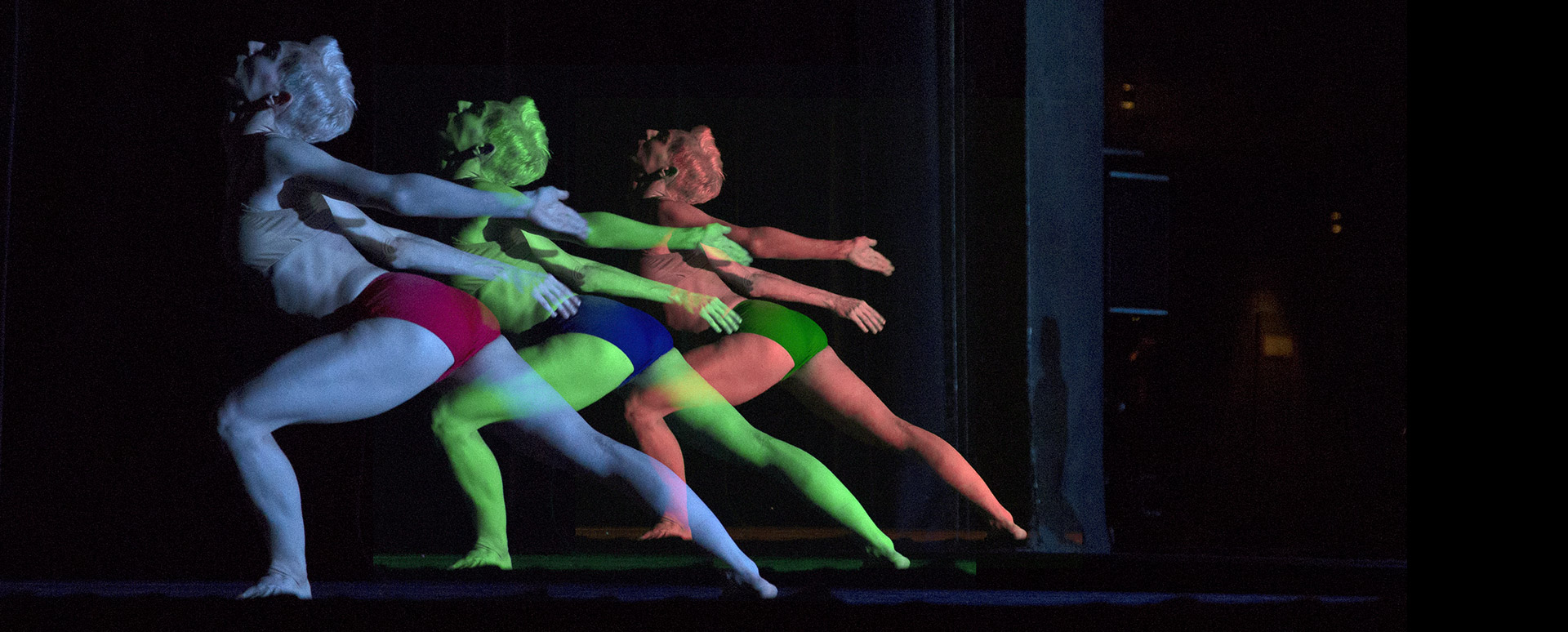
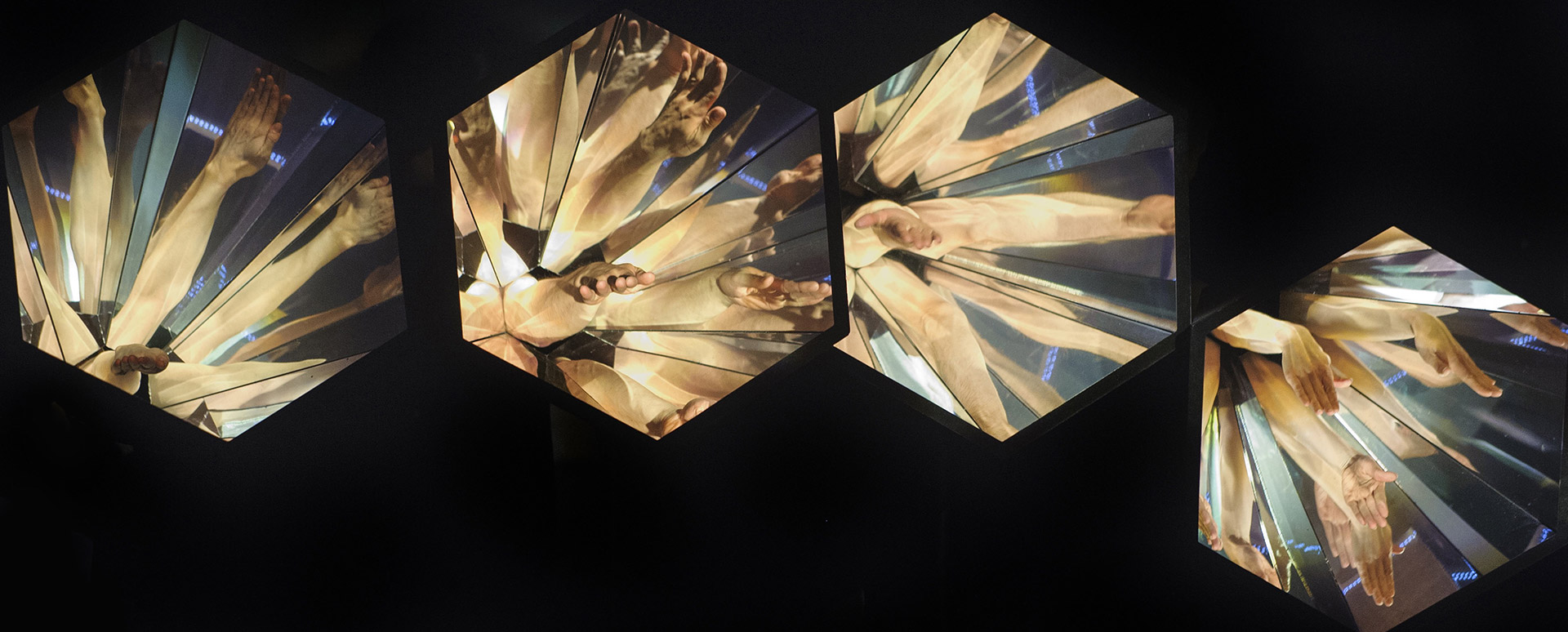
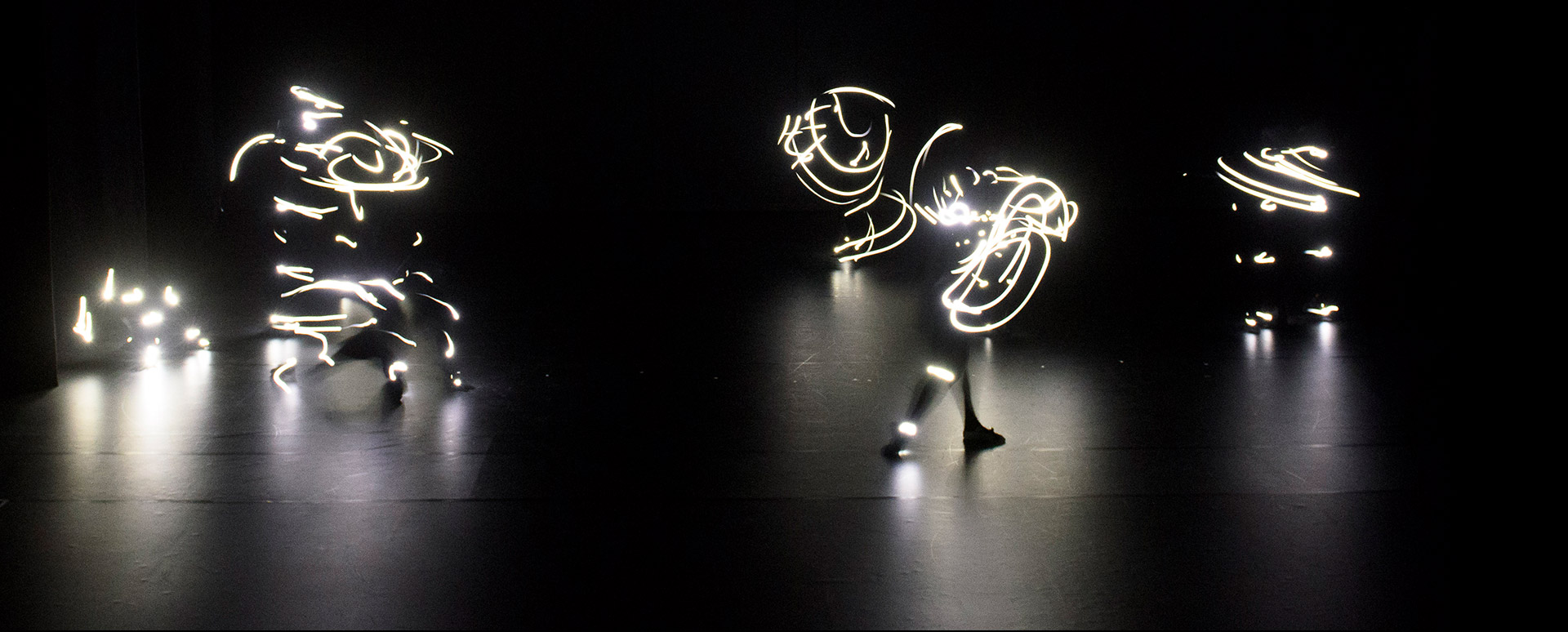
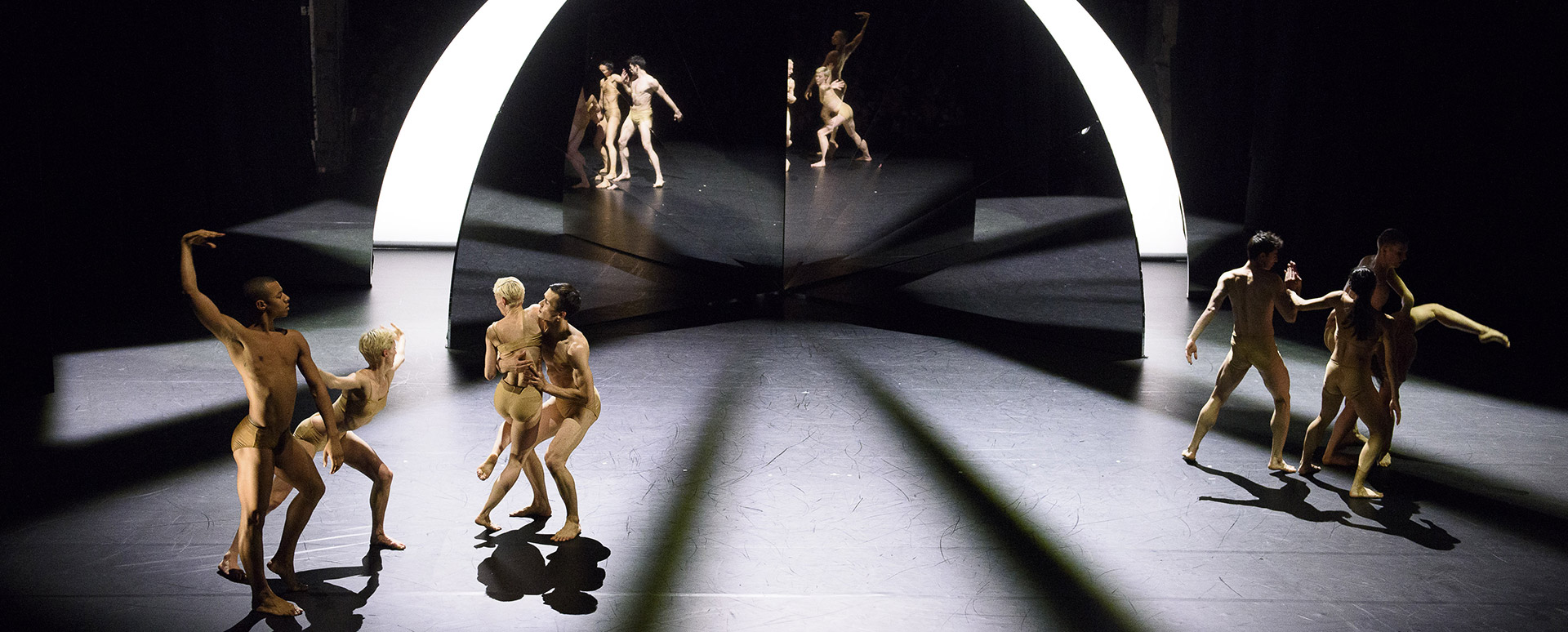
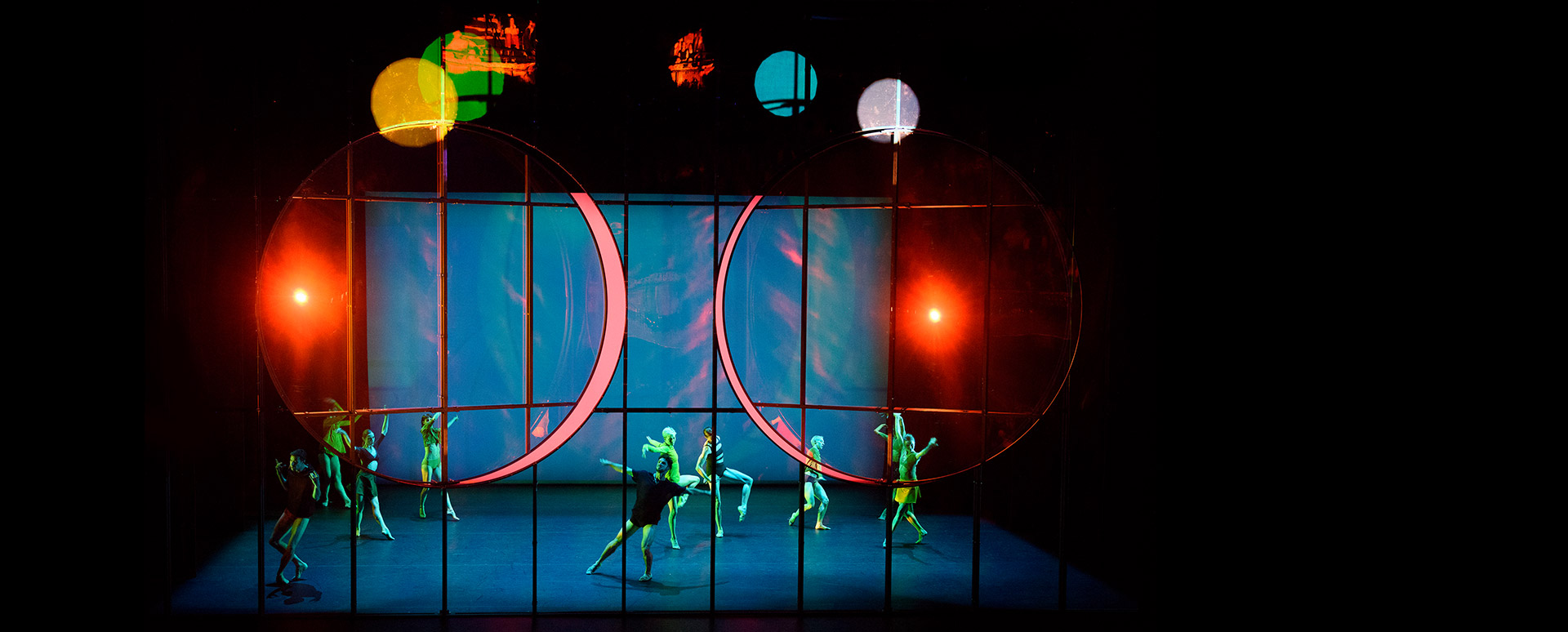


 Seat plan
Seat plan






